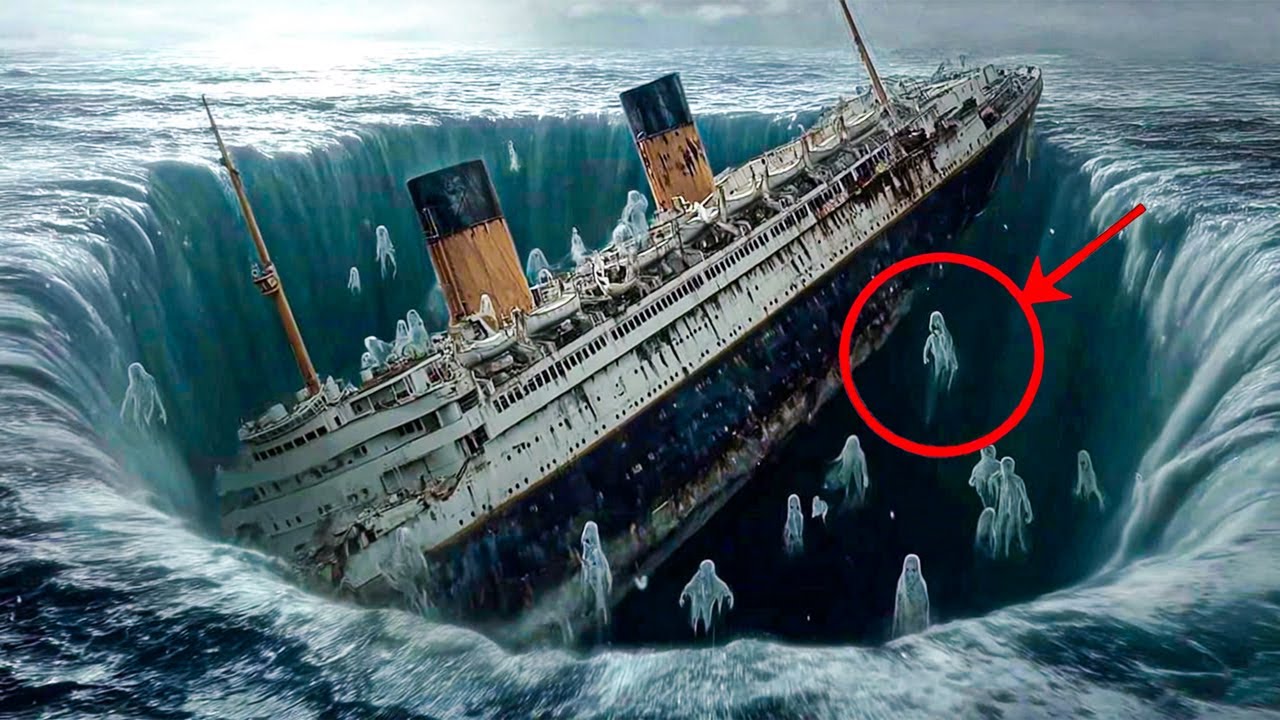🚨 The Bermuda Triangle’s Dark Secret FINALLY Exposed! 🚢✈️
For decades, ships and planes have vanished into thin air in that eerie stretch between Florida, Bermuda, and Puerto Rico. Aliens? Atlantis? Time warps? Scientists just dropped a bombshell that flips everything we thought we knew. 😱 What’s really lurking in the Devil’s Triangle? You won’t believe what they found with cutting-edge tech! 👀
🔗 Click to uncover the truth behind the mystery:

For generations, the Bermuda Triangle has been a name that sparks intrigue, fear, and endless speculation. Stretching roughly between Miami, Florida, Bermuda, and San Juan, Puerto Rico, this loosely defined region in the North Atlantic Ocean—often called the Devil’s Triangle—has been blamed for the mysterious disappearance of over 50 ships and 20 airplanes over the past century. From the vanishing of the USS Cyclops in 1918 to the infamous Flight 19 in 1945, stories of vessels and aircraft disappearing without a trace have fueled wild theories: alien abductions, time warps, sea monsters, even the lost city of Atlantis. But recent research, leveraging advanced mapping and real-world data, claims to have cracked the code behind this enduring enigma. Spoiler alert: the truth is far less fantastical but no less fascinating.
The Myth That Captivated the World
The Bermuda Triangle’s legend began to take shape in the mid-20th century, though reports of strange occurrences date back to Christopher Columbus, who noted odd compass readings and mysterious lights in the area during his voyages. The term “Bermuda Triangle” was coined in 1964 by writer Vincent Gaddis in a pulp magazine article for Argosy, where he described a triangular region that had “destroyed hundreds of ships and planes without a trace.” The idea caught fire, amplified by Charles Berlitz’s 1974 bestseller The Bermuda Triangle, which linked the disappearances to everything from paranormal forces to the sunken ruins of Atlantis. The public was hooked, and the Triangle became a cultural phenomenon, inspiring books, documentaries, and countless conspiracy theories.
But not everyone bought into the hype. In 1975, librarian Larry Kusche published The Bermuda Triangle Mystery: Solved, a book that methodically debunked many of the sensational claims. Kusche found that some “mysterious” disappearances happened during storms that were conveniently omitted from reports, while others occurred far outside the Triangle’s boundaries or involved ships that were later found. His work, backed by institutions like Lloyd’s of London and the U.S. Coast Guard, suggested the Triangle was no more dangerous than any other heavily trafficked ocean region. Yet the myth persisted, fueled by our love for the unknown. So, what’s the real story?
New Research Sheds Light
Fast forward to 2025, and scientists like Dr. Simon Boxall, an oceanographer from the University of Southampton, and Australian scientist Karl Kruszelnicki have doubled down on demystifying the Bermuda Triangle. Using advanced mapping technologies, satellite imagery, and real-world oceanographic data, they’ve pieced together a compelling case that the Triangle’s “mysteries” are rooted in natural phenomena, human error, and statistical probability. Their findings don’t involve UFOs or interdimensional portals but instead highlight the unique and treacherous conditions of this part of the Atlantic.
One of the leading explanations is the phenomenon of rogue waves. These massive, unpredictable walls of water—sometimes reaching heights of 100 feet (30 meters)—can form when storms from different directions converge, creating a chaotic interplay of waves. Dr. Boxall, featured in the Channel 5 documentary The Bermuda Triangle Enigma, explained that the Triangle’s location makes it a hotspot for such conditions. Storms from the south and north often collide here, amplifying wave heights to catastrophic levels. In lab simulations, researchers recreated these rogue waves and showed they could snap even large vessels like the USS Cyclops in half. The Cyclops, a 542-foot Navy supply ship that vanished in 1918 with 306 crew members, is often cited as a prime victim of such a wave, with no distress signal or wreckage ever found.
Another factor is the Gulf Stream, a powerful ocean current that flows through the Triangle. This current can cause rapid, violent weather changes, generating squalls, waterspouts, and hurricanes that catch ships and planes off guard. Before modern weather forecasting, mariners relied on less accurate predictions, making them vulnerable to sudden storms. The Triangle’s geography doesn’t help: its shallow reefs and numerous islands create hazardous navigation routes, especially for inexperienced crews. Add to that the Puerto Rico Trench, the deepest point in the Atlantic at 27,493 feet, which can swallow wreckage whole, making recovery nearly impossible.
Then there’s the issue of magnetic anomalies. In parts of the Bermuda Triangle, compasses can point to true north instead of magnetic north, a phenomenon tied to the region’s alignment with the agonic line in the early 20th century. This subtle difference could lead to navigational errors, especially for pilots and sailors relying on outdated equipment. The infamous Flight 19, a group of five U.S. Navy bombers that disappeared in 1945, is a case in point. The flight leader, Lt. Charles Taylor, reported malfunctioning compasses and disorientation, leading the squadron far out into the Atlantic until they ran out of fuel. A rescue plane sent after them also vanished, deepening the mystery. But as Kruszelnicki points out, Taylor’s poor navigation skills and failure to follow protocol likely sealed their fate, not some supernatural force.
Human Error and High Traffic
Kruszelnicki emphasizes that the Bermuda Triangle is one of the most heavily traveled regions in the world, with countless ships and planes passing through daily to reach ports in the U.S., Europe, and the Caribbean. Statistically, the number of disappearances isn’t unusual for such a busy area. Lloyd’s of London and the U.S. Coast Guard back this up, noting that the Triangle doesn’t see a higher rate of incidents than other comparable ocean regions. In fact, a 2013 study of the world’s most dangerous waters didn’t even list the Bermuda Triangle.
Human error plays a massive role, too. Dr. Boxall cites a 2016 Coast Guard report showing that 82% of maritime incidents in the Triangle involved people with no training or safety equipment. Take Flight 19 again: the pilots were inexperienced, and their leader was reportedly hungover and without a watch, a recipe for disaster in a region prone to sudden storms. Older incidents, like the 1948 disappearance of the Star Tiger and Star Ariel passenger planes, were likely due to equipment limitations, as both aircraft were operating at the edge of their range.
Debunking the Paranormal
What about the weirder theories? Some have pointed to methane gas eruptions from the ocean floor, which could reduce water density and cause ships to sink rapidly. Others, like mineral prospector Nick Hutchings, suggest magnetic materials from an ancient underwater volcano in Bermuda could interfere with navigation systems. While intriguing, these ideas lack solid evidence. Methane clathrate eruptions are rare and unproven in the Triangle, and no significant magnetic anomalies have been consistently documented. Even the famous 1970 account of pilot Bruce Gernon, who claimed to have flown through a “time warp” cloud, is dismissed by experts as an optical illusion or meteorological phenomenon.
The allure of the supernatural is hard to resist, though. Stories of aliens, Atlantis, or interdimensional portals are far more thrilling than rogue waves or pilot error. As Kruszelnicki puts it, “People will ignore facts and figures all the time” when a good story is on the table. The Bermuda Triangle’s myth has been perpetuated by media, from Berlitz’s sensational books to TV shows and movies that lean into the spooky. But modern technology—GPS, radar, and advanced weather tracking—has made the region safer than ever. Planes fly over it daily, and ships navigate it without incident. The Triangle isn’t a no-fly zone or a maritime death trap; it’s just a busy patch of ocean with a knack for bad weather.
Why the Mystery Endures
So why does the Bermuda Triangle still captivate us? Part of it is our fascination with the unknown. The ocean is vast, deep, and inherently mysterious—30,000 feet deep in some parts of the Triangle, according to Kruszelnicki. When something disappears into that abyss, it’s easy to imagine it’s gone to another dimension rather than sunk by a storm. The lack of wreckage, often due to the Gulf Stream dispersing debris, only fuels the imagination. Plus, early reports were riddled with exaggerations. Kusche’s research showed that some “missing” ships were found, and others never existed at all. Yet the stories stuck, because who doesn’t love a good mystery?
The Triangle’s cultural staying power also comes from its ability to evolve. From Columbus’s strange lights to modern tales of hexagonal clouds acting as “air bombs” (a theory later clarified as misquoted), there’s always a new angle to explore. Even as science chips away at the myth, the Bermuda Triangle remains a symbol of nature’s unpredictability and humanity’s tendency to see magic where there’s just math.
The Final Word
The Bermuda Triangle isn’t a portal to another world or a graveyard for alien experiments. It’s a complex, often treacherous part of the Atlantic where nature and human fallibility collide. Rogue waves, violent storms, navigational hazards, and plain old bad decisions explain the disappearances far better than any sci-fi plot. Thanks to advanced mapping and data, we now know the Triangle’s secrets aren’t so secret after all. But that doesn’t mean it’s lost its grip on our imagination. Next time you’re sailing near Miami or flying over Bermuda, you might still glance at the horizon, wondering if something strange is out there. And that’s okay—sometimes, the real mystery is why we can’t let go of the myth.





